It’s been a productive week here at TBI! The last part of the archaeology module was all about learning how to excavate a site, and we were lucky enough to participate in an archaological dig with the Later Prehistory of West Turkana (LPWT) team. The site we’re working at, Nakwaperit 2, is thought to be a remnant of a habitation site used by early pastoralists (or herders) in the area. Most of our week was spent working at the site, where the students learned a lot about how an archaeological dig works. We also went on a hike to a place called Lothagam, and took a trip to the closest town to us, Lodwar, to do some shopping.
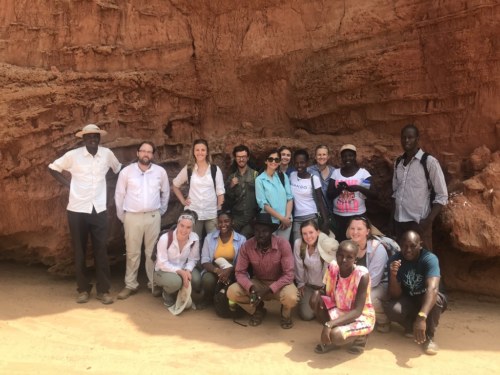
Our group at Lothagam. (Photo credit: Lydia Myers)
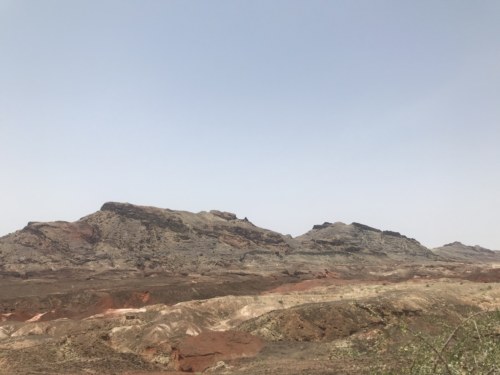
A view of Lothagam’s eastern ridge. (Photo credit: Lydia Myers)
The hike to Lothagam was meant to give the students perspective on why we are working at Nakwaperit. Around 10,000-6000 years ago, Lake Turkana was at a much higher level than it is now, and Lothagam was a peninsula that was surrounded by the lake. About 5300-3900 years ago, Lake Turkana dropped dramatically, and fishing lifestyles gave way to herding. Lothagam has sites dating to both periods, that can show how people reorganized their economic and social lives. Today, Lothagam is a valley of beautiful red sandstones between two steep volcanic ridges.
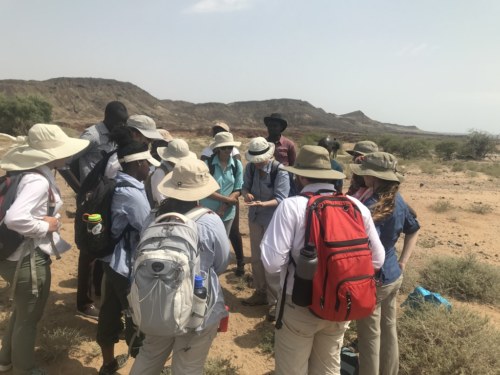
Professor Hildebrand describing some of the pottery we found at Lothagam. (Photo credit: Lydia Myers)
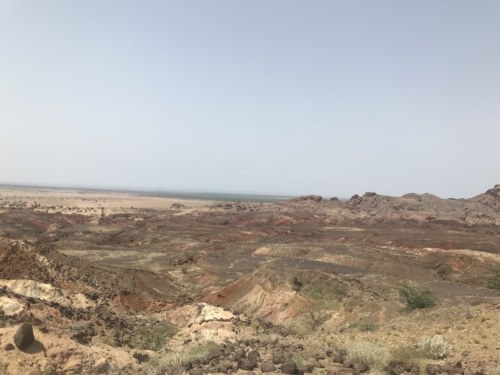
A view across the south of Lothagam, Lake Turkana is visible in the distance. (Photo credit: Lydia Myers)
We started the day at a large site where people fished when the the lake levels were high. Then we walked on to a later ceremonial site, Lothagam North Pillar Site, built by early herders 5000 years ago. Pillar sites consist of a number of circular stone platforms and large piles of rock called cairns. The largest stone platforms usually have large stone pillars, created naturally out of a rock called basalt, which was dragged from more than a kilometer away and placed in the middle by the people who built the site.
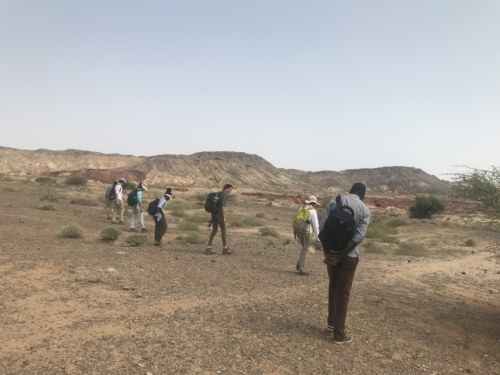
Our group walking across the landscape looking for artifacts. (Photo credit: Lydia Myers)
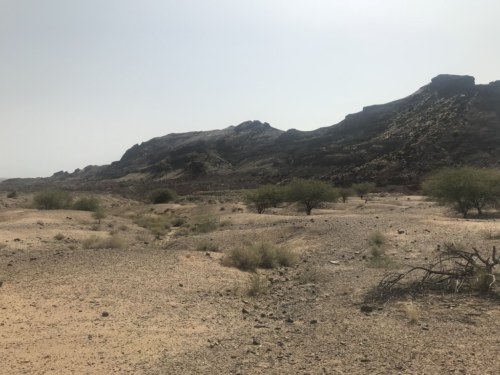
A view from the valley in between the two ridges of Lothagam. (Photo credit: Lydia Myers)
At Lothagam North we stopped and rested for a while Professor Hildebrand told us all about the site. Her team’s research (LPWT) has shown that Lothagam North was probably used as a burial site, with possible other ceremonial uses. We know a lot about the ceremonial practices of the people who used the site from research done, but unfortunately the pillar sites do not give us a good example of how these people were spending their every-day lives. After we all had a better understanding of the pillar site, we climbed to the top of the western ridge and ate our lunch while being treated to the fantastic views of the landscape around Lothagam. We climbed down the other side and stopped at the other pillar site, Lothagam West, which is similar to Lothagam North, but smaller.
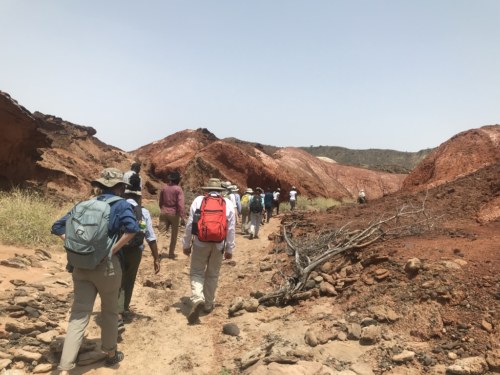
Students hiking up through the red sandstones to the Lothagam North site. (Photo credit: Lydia Myers)
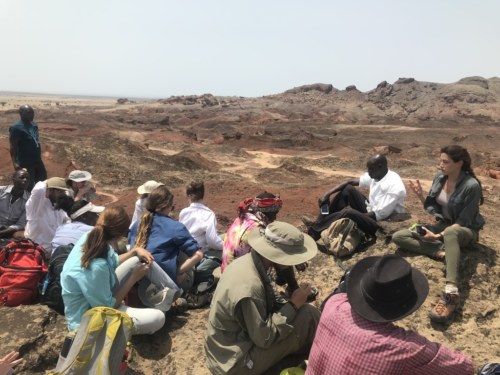
Resident Director Lucia Nadal teaching the students about the geology of Lothagam. (Photo credit: Lydia Myers)
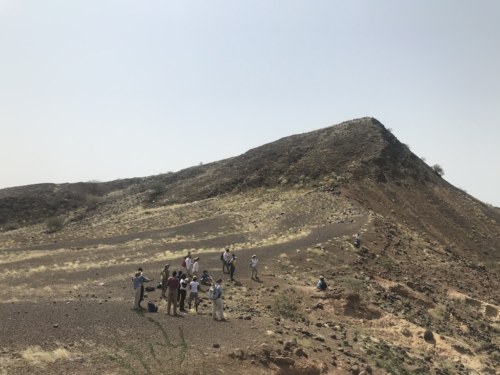
Our lunch spot on the top of the western ridge. (Photo credit: Lydia Myers)
Most of the rest of the week was spent excavating at Nakwaperit 2, which we hope will provide the information we are missing from the pillar sites, basically a description of how the people using the pillar sites were spending their everyday lives. We think Nakwaperit and the pillar sites are related to each other because the pottery the students were collecting last week is very similar to the pottery we find at Lothagam, so they are probably the same age. The students were taught by Professor Hildebrand how to properly excavate the site, by digging down into the sediment layer by layer using brushes and special trowels. We also had another researcher with us in the field, bioarchaeologist Dr. Elizabeth Sawchuck, who specializes in the recovery and analysis of archaeological human remains and helped salvage some burials that were in danger of being washed into the Turkwel River. The students learned how to properly and respectfully excavate these sensitive features, as well as how to study human remains to reconstruct what life was like in the past. This work was done with the support of the local community, who were aware that the burials were at risk of being lost forever.
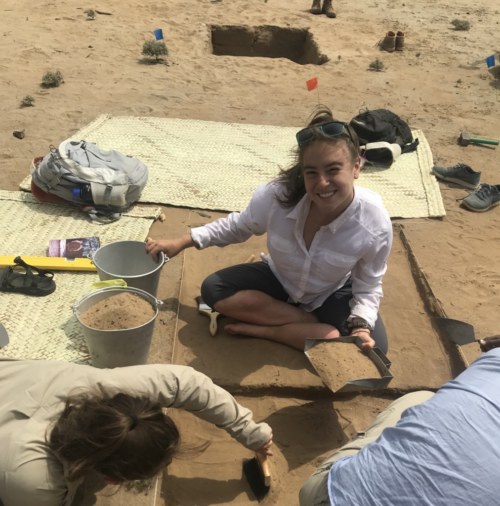
Grace and Kristen starting excavation on a unit. (Photo credit: Lydia Myers)
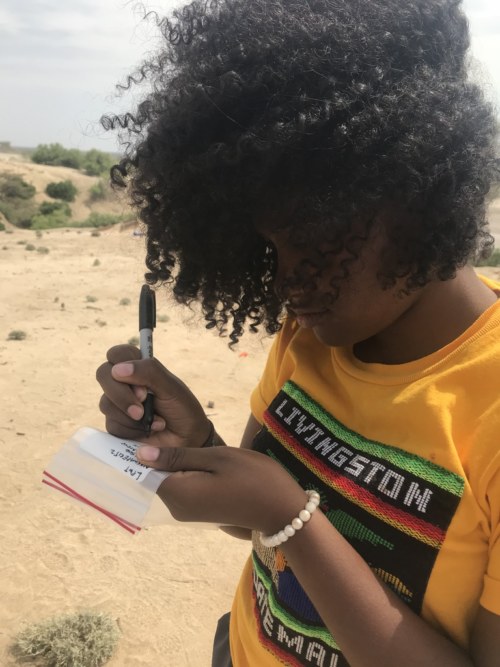
Keyly writing information on an artifact bag. (Photo credit: Lydia Myers)
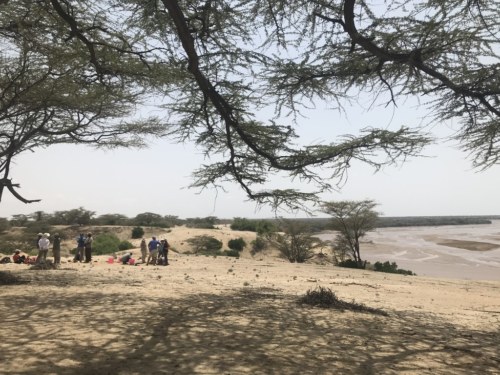
Our group at the site. (Photo credit: Lydia Myers)
We excavated at Nakwaperit for 6 days, during which time we found many of interesting artifacts like stone tools, pottery, and ostrich eggshell beads, and learned a lot about the people who used to live there. On the last day, we closed the site by putting a barrier between the excavated and unexcavated sediment that wouldn’t decompose over time, and then filled our excavation units back up with sand so that they wouldn’t erode away. This was done so that future scientists would be able to tell where we dug at the site.
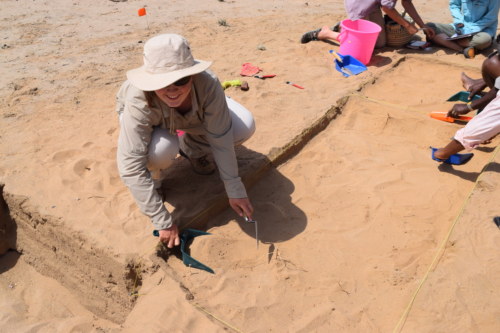
Kristen digging in a unit with a special trowel. (Photo credit: Dr. Elizabeth Sawchuk)
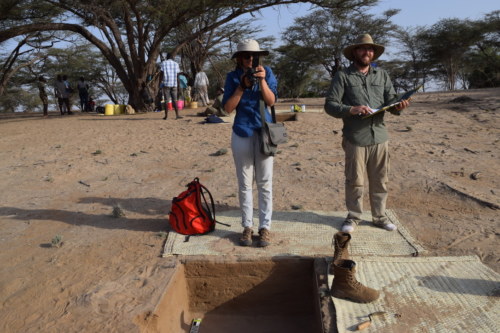
Samar taking a picture of the unit while Harrison records some data. (Photo credit: Dr. Elizabeth Sawchuk)
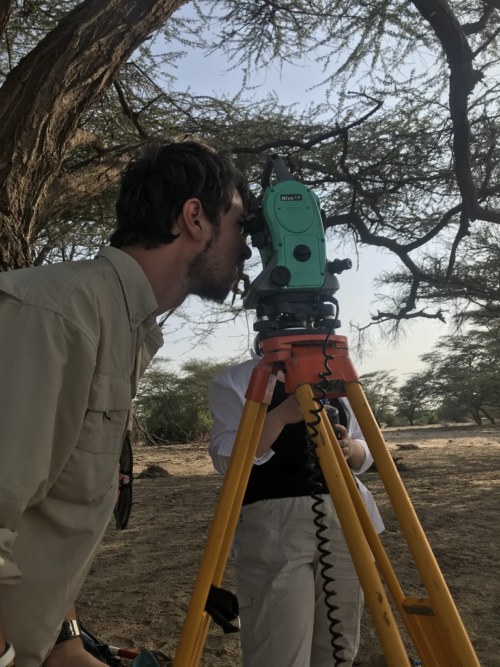
Ian operating a Total Station, one of the pieces of equipment used at the site to capture precise spatial data. (Photo credit: Lydia Myers)
On Wednesday of this week, we finished the archaeology module and Professor Hildebrand left the next day. We will be starting the paleoanthropology module next, but in between the two we have some time off, so we went into Lodwar to do some shopping and looking around on Thursday. We went to some local markets and shops, and then had lunch in a restaurant called The Diner that has great burgers and milkshakes. On Friday, Dr. Lewis began the paleoanthropology module by teaching the students about evolution, and starting to look at the differences in skeletal anatomy between different types of animals.
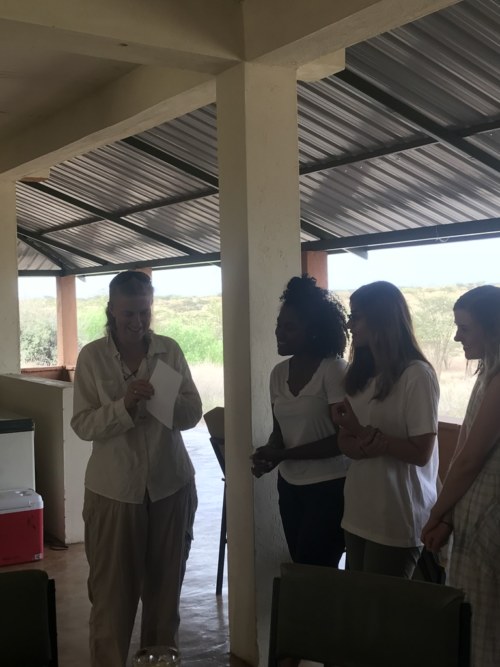
The morning of Professor Hildebrand’s departure, the students made her a card. (Photo credit: Lydia Myers)
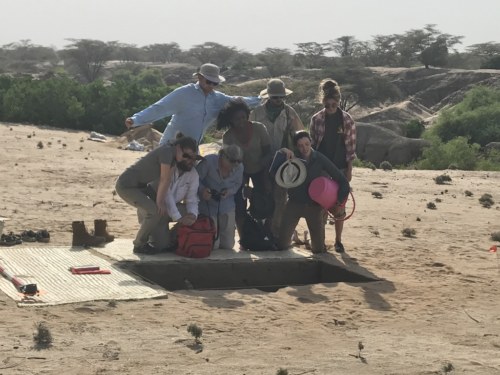
The students and Drs. Lewis and Hildebrand making a shadow on the side of the excavation unit to take a picture. (Photo credit: Lydia Myers)
All in all, it’s been a very busy week with many exciting new experiences. Tomorrow (Monday), we will be heading up to a place called Lomekwi to continue the paleoanthropology module. Lomekwi is an active archaeological site a few hours north of TBI, and we will be there until August 10th working with the West Turkana Archaological Project (WTAP). There is no Wi-Fi at Lomekwi, so we won’t be able to post another blog until we get back. But, as soon as we get back we will update you on all the cool things we will have done while we were up there. Stay tuned!
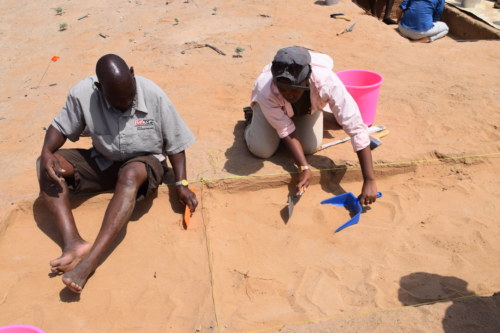
Keyly and our representative from the National Museums of Kenya, Justus, digging in a unit. (Photo credit: Dr. Elizabeth Sawchuk)
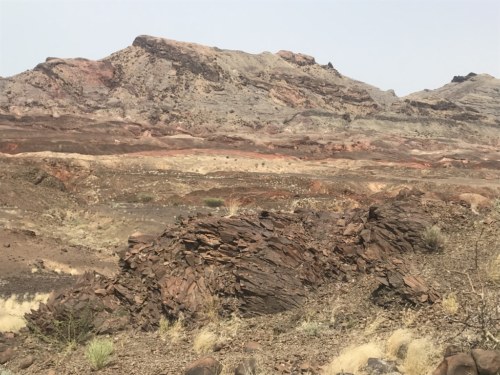
Another spectacular view of Lothagam. (Photo credit: Lydia Myers)





